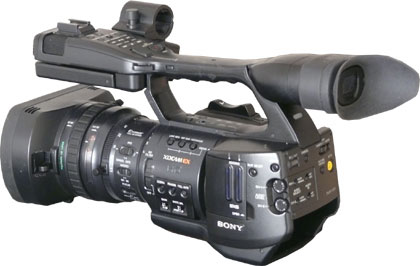
April 9, 2008
By Rick Young
The Sony EX1 caused a storm at NAB 2007 when it was unveiled. Sealed behind glass, the camcorder that promised to do away with tape and shoot high quality XDCam HD images to affordable SxS cards, spun slowly on a turntable while the hoards came to view, admire and lust after this new acquisition tool...
Close to 9 months later and Sony delivered the EX1 to the world. Word spread fast that this new model was out on the streets and in the hands of camera people the world over. It was loved, it was hated, it was talked about and debated with the fervour of religious extremism, and in the months that followed has taken the crown as one of the leading affordable camcorders in today's market.
There are serious competitors to the EX1. Surprisingly one of the main contenders comes from Sony itself with another model - this time HDV and SD with interchangeable lenses - the HVR-Z7. Then of course there are the well-established competitors, Panasonic, JVC and Canon, each of whom has their own committed and loyal band of users.
This article isn't about the competition and how the EX1 compares, shapes up, or conquers - this is a look at this new breed of camera and what it represents in today's market. This camera is unique in that Sony has chosen to do away with tape, shoot only HD, and to a card-based system and which integrates in such a way with Apple technology it is as if the two were designed by the same mind.
One thing became clear as I came to know this new creation - one cannot judge a camera on the first outing. Prejudices of what one has already been using creep in and alliances to other formats and modes of operation colour one's point-of-view.
So it is only after having the EX1 for 3 months that I have tapped out the words you are now reading. This camera offers so much and forces the user to behave in such a way that to write earlier would have given a limited view on what is an open world of possibilities. Enough talk - on with the review.
First Impressions
The box arrived, the camera is in my hands. It was smaller than I had imagined. Shorter than a Z1 yet chunkier, due to the protruding, rotating, hand-grip. Amazingly compact for what it is.
The lens.
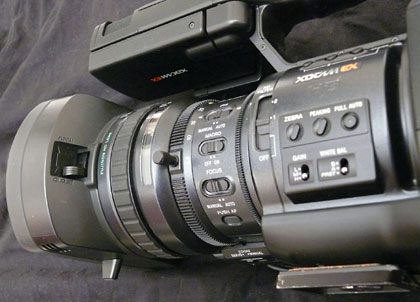 I hadn't even switched the camera on, yet the lens stood out as being something special. To touch, it feels like a pro lens. The mechanism, the look, the markings, the layout -I get the impression the designers started with a lens and then built a camera to attach to this. Of all the lenses on all the affordable cameras that have ever come to market this stands out as being high-end.
I hadn't even switched the camera on, yet the lens stood out as being something special. To touch, it feels like a pro lens. The mechanism, the look, the markings, the layout -I get the impression the designers started with a lens and then built a camera to attach to this. Of all the lenses on all the affordable cameras that have ever come to market this stands out as being high-end.
SxS cards in the slots, battery attached, screen extended, I switch it on.
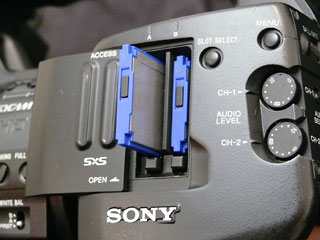
Shooting
The images look so sharp and beautiful on the high quality LCD display one needs to be careful not to fall into the trap of forgetting to do the basics. Check focus with the expanded focus facility, use the auto-mode intelligently and manual exposure for precise control. One needs to be careful with gain. The camera works best in manual. Manual everything - focus, exposure and white balance. Lesser cameras do more for you when it comes to auto-everything. The EX1 wants to be driven in manual.
The camera seems to be more unforgiving than some of the more affordable HDV models. This is a not a point-and-shoot imager. It can be used in this way - Sony have provided a "full-auto" button to quickly let the camera operator get the shot quickly but this needs to be used as a function among many functions - not as a method to rely on.
Focus is critical - of course this applies to any camera but with the EX1 the high quality lens provides sensitive focus and if one relies exclusively on what they see in the view finder or LCD screen it can be easy to miss being slightly out - point being - get it right, pay attention, otherwise what looked beautiful at 2 and a half inches may look less than beautiful at 42 inches or larger.
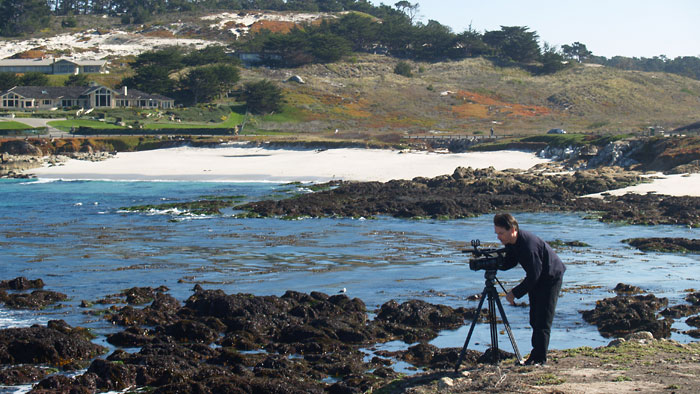
Understand the benefits of the ND filters. These cut down the light which hit the sensors and give control over depth of field. The less light the lesser the depth of field and the greater the potential for those "filmic" shallow depth of field shots. However, this may increase the need for gain - and gain on this camera can be quite fierce. The defaults are 9 and 18db - however, this can be set to a milder 3 or 6db, accessible on a two button gain switch.
The EX1 is fitted with 3 half inch CMOS sensors. Every other camera in this league (at time of writing) has 1/3rd inch sensors. The bigger the sensor, the more light that can be soaked up, thus the better the image potential. Plus bigger sensors allow one to shoot with more shallow depth of field - how much of a difference there is between 1/3rd inch sensors and 1/2 inch sensors in arguable.
As with other affordable HD models there can be problems with panning. Move quickly and the image can fall apart. Move at a slower speed and decent to good results can be achieved. Shoot 720 50P and this pretty much does away with the problem of panning. I'm a big fan of the 720 format and to shoot at 50P produces exceptionally good images. Furthermore, it has been recommended that one doubles the shutter speed in relation to the frame rate at which one is shooting - so if one were shooting at 25 frames per second - manually set the shutter to a 50th of a second. Shoot at 50 frames a second, set the shutter to a 100th of a second. I've still got to experiment with this method however it was suggested to me that this helps prevent panning problems. Another important point is if one pans with a moving subject then the subject will remain sharp while the motion blurs. This can be used to good effect. One should be aware that this "panning issue" is not exclusive to affordable HD or MPEG - film suffers from this too. Watch pans on the big screen - fast pans suffer from motion problems, slow pans appear much better. One always has to work to get the most out of a camera or a format.
Tapeless Acquisition
When shooting tapeless the question of "what to do with the media" is more important than anything. I'm always nervous about dumping to hard drive and clearing cards. I feel much more secure having 2 hard drives and keeping these in separate bags. Lose a drive and you lose your entire days shoot or even more if you have several days footage on a single drive.
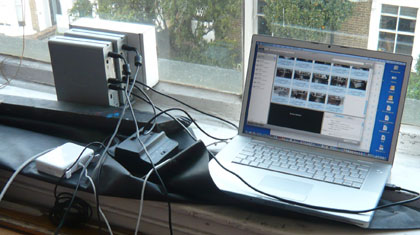
The transfer process is incredibly fast. It takes less than five minutes to transfer an 8GB cards worth of footage onto a MacBook Pro. This equates to 5 times faster than real-time. This is a trouble-free process which is perfectly suited to onsite production. Simply put the XDCam EX card into the Express 34 slot on the MacBook Pro, launch the XDCam EX software, highlight the clip or clips you wish to import and press the import button. A progress bar zips along to show the transfer as it takes place and if one wishes "in" and "out" points can be marked to choose the portion of the clip one wants to transfer. It is remarkably simple and quick to highlight everything and transfer the entire contents of the card to hard drive. One then simply needs to eject the card, reformat and you are then ready to shoot again.
We have entered a time in acquisition where compromise has become an acceptable way of working. Buying a high quality video camera used to be like buying a house in terms of cost, however compromises in compression, lens technology, processing have seen the price of cameras tumble and some camera people hate this. My verdict is these compromises have opened doorways and shooting possibilities which produce high quality images at very affordable prices. I regard the images out of the EX1 as the some of the best I have seen from a sub-$10 000 camera. The images are sharp with beautiful colour, the size of the camera suits me perfectly. One cameraman remarked to me that ergonomically he found the camera very awkward. Personally, I love the way the EX1 feels and handles. For hand-held one needs two hands to operate but I would not call the camera heavy or difficult. The integration of the rotating grip provides versatility, the small form means I can carry it all day without making one arm longer than the other and I can shoot five times the footage I would ever be able to achieve with a larger camera - and, if used properly certainly gives images which compete with some of the larger cameras.
How can one define image quality. The difference between the images out of a Sony Z1 compared to DSR-570 or 450 comes down to sharpness and resolution. Prosumer cameras do not offer lenses which compare to the high-end. The difference is noticeable. To call some of the more "prosumer" lenses soft is not an unfair criticism.
The lens on the EX1 is sharp. It provides the look of a more high-end camera - so if you want that high-end look there are two ways to achieve this: one, buy a high-end camera or, buy something with a good lens like the EX1 or a competitor which offers interchangeable lenses so that a quality lens can be attached. Otherwise one is limited to the resolving power of the included lens. I have worked with the Sony Z1 for several years, prior to using the EX1, and have always been very happy with the results. However, the Z1 had a certain look and in no way are the images as sharp as those which come from the EX1. It is worth stating that not everyone likes the "sharp" look. Some people even say the EX1 is too sharp.
Summing Up
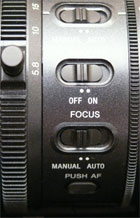 It's like having a DSR-570 in a Z1 size and it shoots HD progressive or interlaced, 1080i or 720P and also 720P 50 which has truly become one of my favourite formats.
It's like having a DSR-570 in a Z1 size and it shoots HD progressive or interlaced, 1080i or 720P and also 720P 50 which has truly become one of my favourite formats.
This is not a perfect camera...
Auto focus not great - but expand the focus and the manual focus control is brilliant. You can shoot with expanded focus engaged. I would describe the focus controls as being so good one could follow a moving bird and keep it in focus. This sets this camera apart from many of the other competing models.
Instant playback of last shot - by default will play the last 3 seconds, however this can be changed in the menu to playback the entire last shot. So a quick check of the last take filmed is easy and useful.
I see the EX1 as heralding a revolution. We now have a very portable camera with 1/2 inch sensors, a quality lens and a tapeless high capacity card system with very fast transfer rates. This compact and portable camera truly has the potential to compete with larger cameras.
Verdict
The beauty of the EX1 is that it shoots very high quality images straight to SxS cards which can then be ingested into a NLE. Operation is slick and impressive. However, as brilliant as the EX1 is it suffers from the major limitation that the camera only does HD.
If you want SD you will have to convert your images and this is a time consuming process (click here for details on how to convert HD images from the EX1 to SD.)
If the client wants SD then this camera will not provide SD native. So workflows need to be adopted, and having used this camera considerably I have found this to be a problem for fast turnaround productions where the requirement is for SD output.
This is not a criticism of the EX1 - but it is something one needs to consider when purchasing.
However - an overlooked feature of the EX1 is that it shoots both XDCam HD at 35mbps, variable bit rate in high quality mode and also 25mbps at a constant bit rate. The 25mbps is HDV and can be fed out of the camera via firewire or moved as data from SxS card to hard drive. Shooting HDV on the EX1 still produces very good images and integrates with other HDV footage. So for the person who owns an EX1 and another HDV camera such as Z7 or Z1 then compatibility is ensured.
If you want a HD camera with a great lens which shoots high quality images with tapeless workflow - and the ability to shoot to various HD formats, then the EX1 stands out as a front runner in this area.
If you want or need SD and need quick turnaround then it may be wise to look elsewhere. Of course the people at Sony are very clever and one of the main competitors to the EX1, as mentioned right at the beginning of this writing comes from Sony itself in the form of the Z7. More on the Z7 soon.
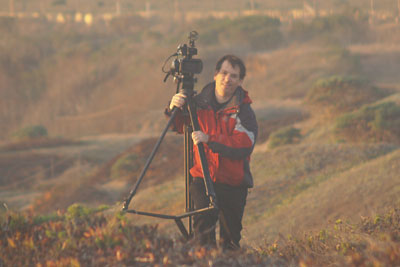
|
Rick Young is the Editor for MacVideo - a website devoted to post-
production on the Mac platform and associated camera technology.
Each week MacVideo features a movie of the week and an interview of the week. |
copyright © Rick Young 2008
are either registered trademarks or trademarks of Apple. Other company and product names may be trademarks of their respective owners.
All screen captures, images, and textual references are the property and trademark of their creators/owners/publishers.